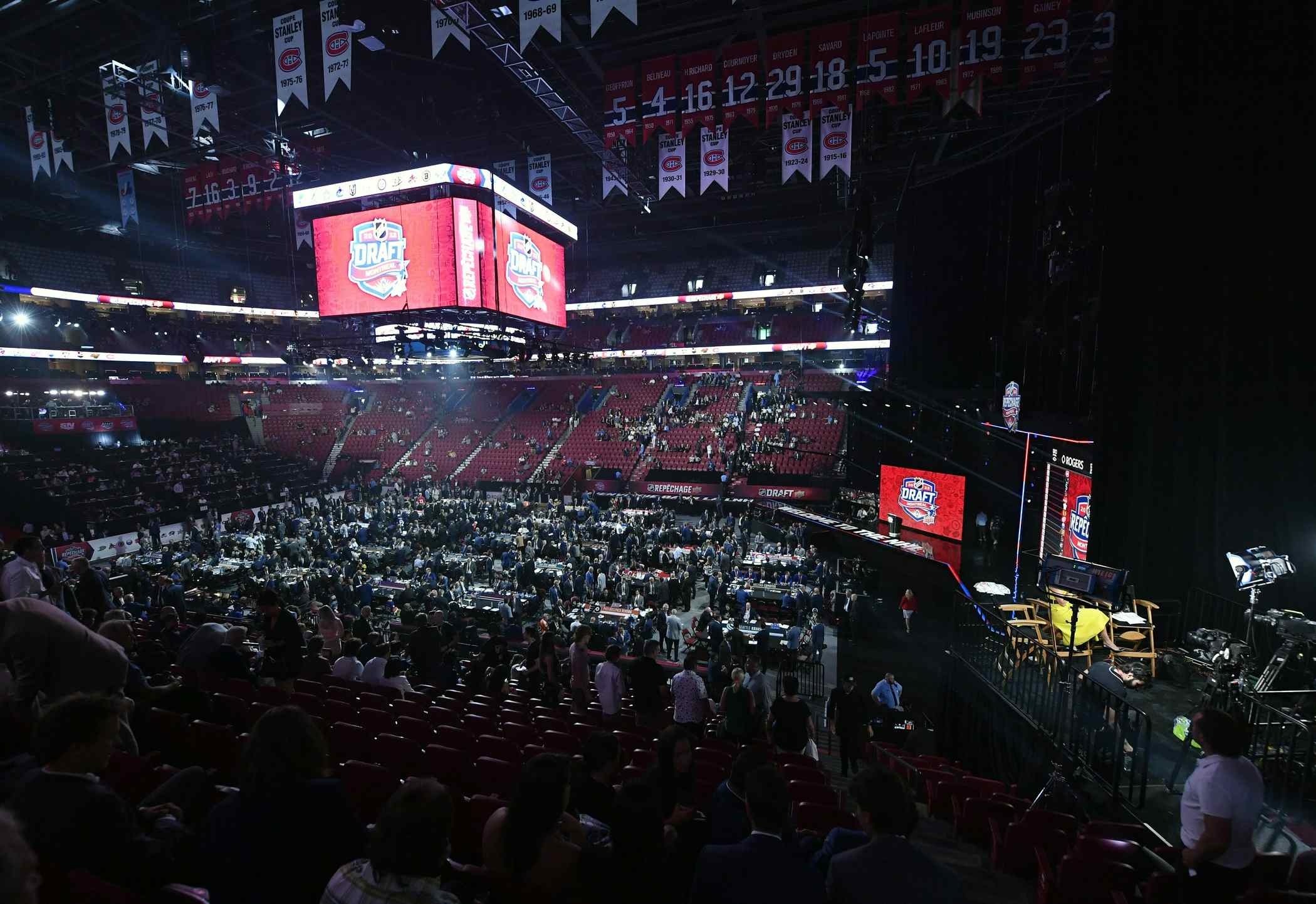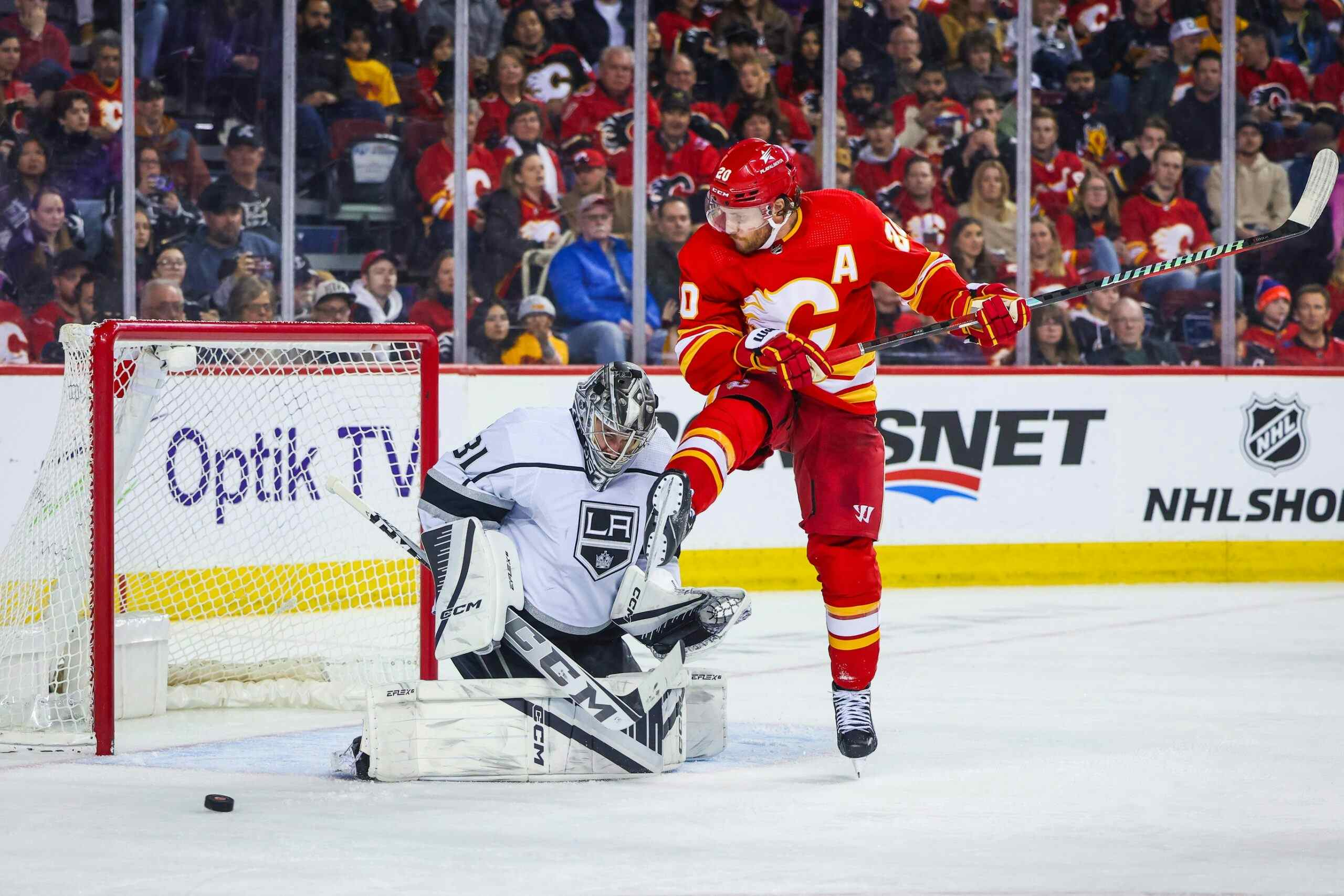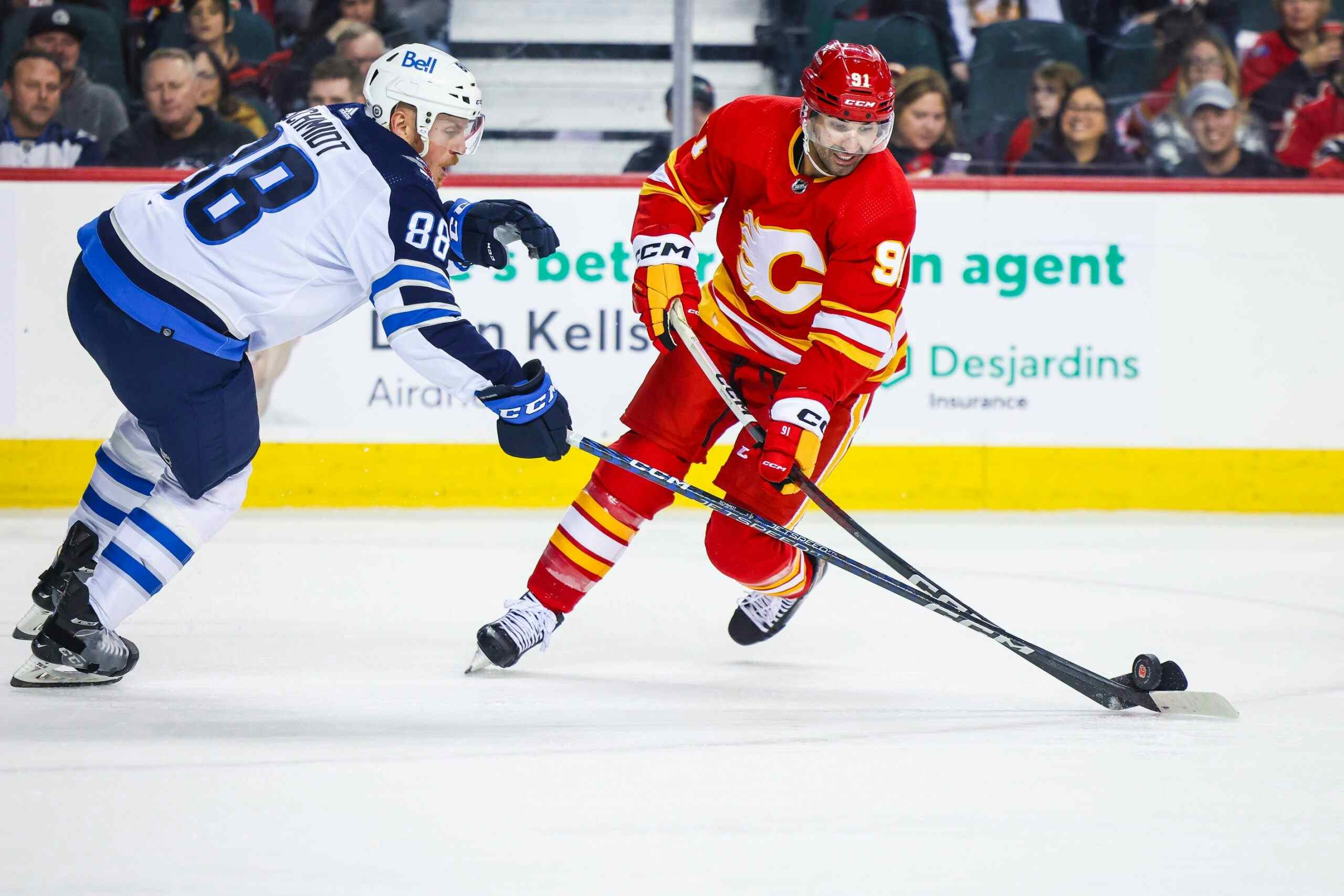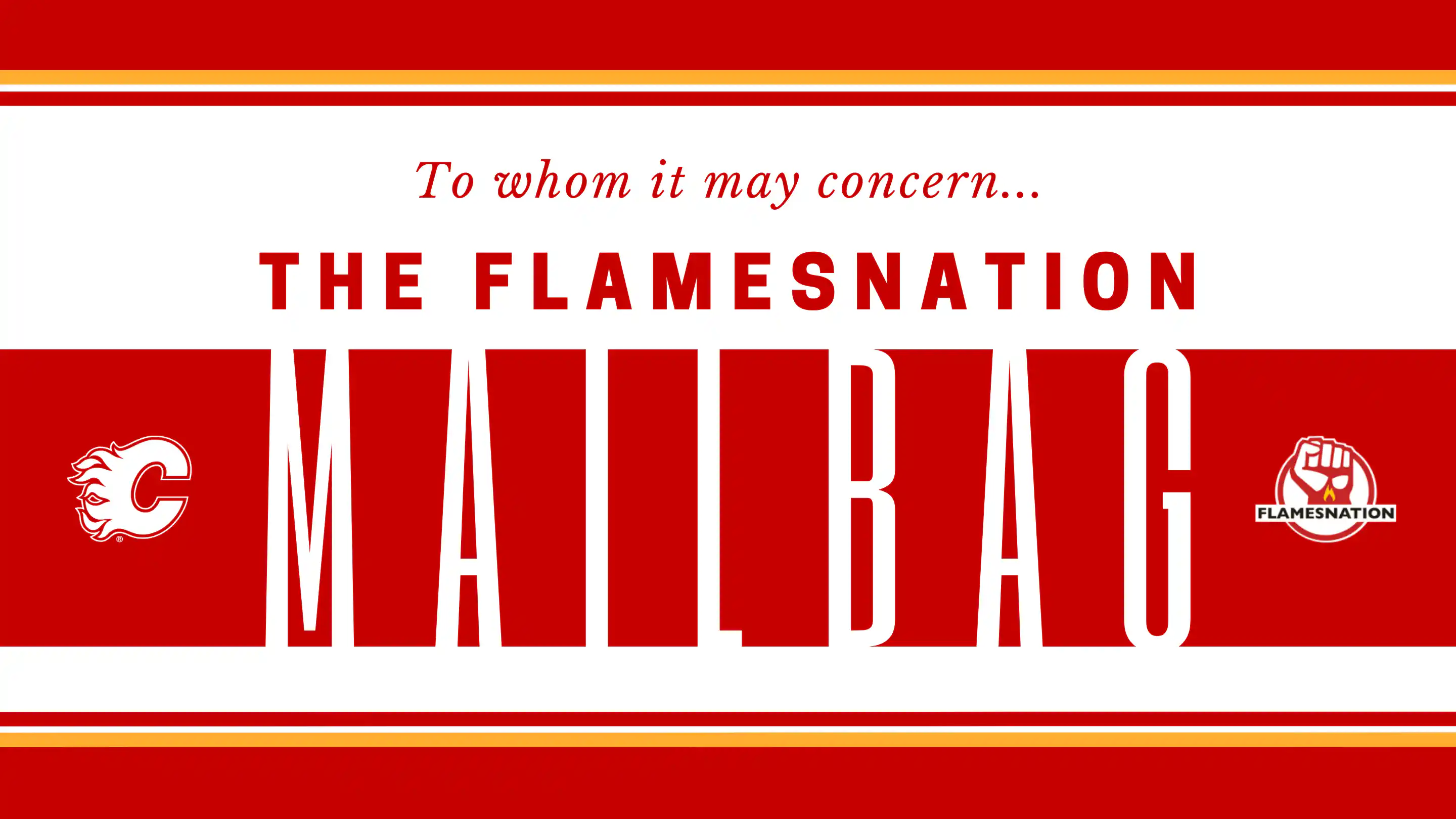Why would the Flames take a chance on Chris Higgins?
By Ari Yanover
7 years agoSo, here we are: it’s September, and Johnny Gaudreau does not yet have a contract. We’ve poked around a bit at just what the Flames’ cap situation for the future could look like, but with what will probably be the most expensive deal on the team still yet to be signed, there hasn’t been much else we can do.
Gaudreau doesn’t have a contract – but Chris Higgins does.
Well, kind of. Not really. He’s on a professional tryout, so he can be cut at a moment’s notice; no commitment has been extended towards him, not even for a season. Kind of like his former Flames career: the one that lasted all of 12 games, and that was that.
Now, it looks like Higgins’ best hope of getting back into the NHL is with the Flames. But he’s far from a lock; guys who sign PTOs don’t tend to earn NHL contracts, even if they do have a decent enough body of work. So Higgins probably isn’t a point of concern.
But let’s talk about him anyway, just in case he is – especially because it wasn’t that long ago he was a successful NHLer.
Wait, could he make the Flames?
The Flames have a budding young core taking off, especially in the forward department. By my count, I see six wingers with guaranteed spots: Gaudreau, Troy Brouwer, Michael Frolik, Lance Bouma, Micheal Ferland, and Alex Chiasson. Brandon Bollig could be among this group by virtue of his contract alone, though he’s probably much less guaranteed.
That fills up seven of eight winger spots, not all of whom will play every game. Healthy scratches happen (as do injuries, which are also known to happen in the pre-season). So consider a list of additional hopefuls: Linden Vey, Hunter Shinkaruk, Matthew Tkachuk, and maybe even leave a spot open for another prospect with potential to come out of nowhere, and the competition is very, very tight.
It’s still possible – Vey (or Bollig?) could be demoted, Shinkaruk and Tkachuk deemed not ready, maybe no prospects stand out enough to play in the NHL to start the season – but the margin is very tight. There are maybe 10 potential winger spots at most, and we’re already at 10 or 11 possibilities without Higgins.
Though it is somewhat interesting to note that if he makes it, Higgins, 33, would be the oldest forward on the Flames, and one of just three guys 30 or older (the other two being Brouwer and Matt Stajan). That doesn’t point towards in any one direction or the other – but it is something to keep in mind, that Higgins is the old man of this group. That’s how young the forward group is; that’s how little anything is actually guaranteed.
What does he bring?
So let’s say Higgins balls out during training camp, and wins himself a real contract. He’d be the first Flame since Raphael Diaz to do so. And just like Diaz, he absolutely would not be being brought in for his offence.
Well, probably not, at least. The Higgins of old had a 52 point season under his belt, not too long before the Flames wanted to bring him on board. He’s hit the 40 point mark once since then and the high 30s twice. There’s some talent there, albeit talent that hasn’t exactly manifested itself since the 2014-15 season.
Let’s put it this way: Higgins’ numbers were so bad last season Mason Raymond outscored him in both the NHL and AHL in fewer games, and the Flames paid him to go away. (He also had a much higher cap hit, while Higgins, if he ends up signing, is going to end up costing basically nothing, but still.)
So what does he bring? Cheap depth. You know, like Josh Jooris, who wasn’t re-signed and then signed with the Rangers for a $600k cap hit. Jooris, who may not be a proven scorer himself, but has pretty decent underlyings of his own and is significantly younger. That kind of depth – but older, but with an greater history of scoring, this past disastrous season aside.
The underlyings
The 2015-16 season was pretty terrible for Higgins, not just in points – remember, two and three years ago this guy was knocking on the door of 40 – but even on the corsi side, too. Via Corsica, here’s Higgins’ 5v5 CF% performance from the 2011-12 season onward (aka: when he basically joined the Canucks full time).

Higgins has had his ups and downs through the seasons, and there’s even precedence before the disaster known as 2015-16 for him to bottom out. At least in 2013-14, he had the chance to work for redemption; having a 39-point season probably helped that cause, though.
So Higgins’ awful season didn’t necessarily come out of nowhere, but there still is reason to believe he can put things back together.
And let’s be honest with ourselves: the Canucks were a pretty awful team in their own rights last season, and that wasn’t entirely on Higgins. Maybe he was terrible because so was the rest of his team? Let’s take a quick look at his WOWYs from the 2015-16 season:

Okay… maybe not, because it looks like Higgins actually brought his teammates down. (Green is Higgins on his own, red are his teammates on their own, and blue is them together.)
Then again, that was just the 2015-16 season. The 2014-15 season painted a much different picture:

The whole “together” part needs work, but at least Higgins didn’t appear to be a disaster on his own that season.
The point here? Higgins is a player with a possibility for redemption. He had a brutal, injury-filled season. And yet, two seasons ago, he was almost a 40-point player with overall pretty decent possession proxy stats. The Flames lose literally nothing by adding him to their training camp roster, and could even gain a quality depth winger out of it, if everything goes right.
He isn’t the cheap depth we previously knew; then again, neither were Chiasson or Vey. We’ll see how this works, but at least the oldest guy of the bunch isn’t guaranteed anything: he’ll have to work his way in to this.
The penalty kill
There’s one other area we need to look at. Higgins was known as a pretty good penalty killer, and considering how the Flames had literally the worst penalty kill in the entire NHL last season, if Higgins can help improve that, then that alone could make him a good pick up.
So let’s take a look at his kill stats. Again, we’re looking from 2011-16 – most of his time with the Canucks – but this time, we’re looking at his CA60 at 4v5. The fewer shot attempts one can allow during a penalty kill, typically, the better for one’s team; that’s what we’re looking at here.

Relatively consistent, until things appeared to go off the rails in February of 2015. In March of that year, he missed some time with a lower body injury; combine that with a broken foot the following pre-season, and it’s possible injuries played a role in his dropped abilities, too.
And if he’s recovered sufficiently from them, and can return to form – well, that’s a possibility worth exploring.
For the record, when comparing Higgins’ CA60 over that time frame to the Flames’ most-used forward penalty killers last season – Backlund, Stajan, Frolik, and Jooris – Higgins beats out all of them. Backlund comes the closest with a 4v5 84.42 CA60 from 2011-16; Higgins was at 78.28. Frolik played for three different teams over the same time period – including a Stanley Cup Champion – and his CA60 was 90.72.
So if there was any reason to give Higgins a go, a step towards fixing the league’s worst penalty kill could be a big one. If Higgins can return to even just defensive form, then this could end up being a shrewd move.
And if he doesn’t, then it doesn’t cost the Flames a thing.
Recent articles from Ari Yanover





